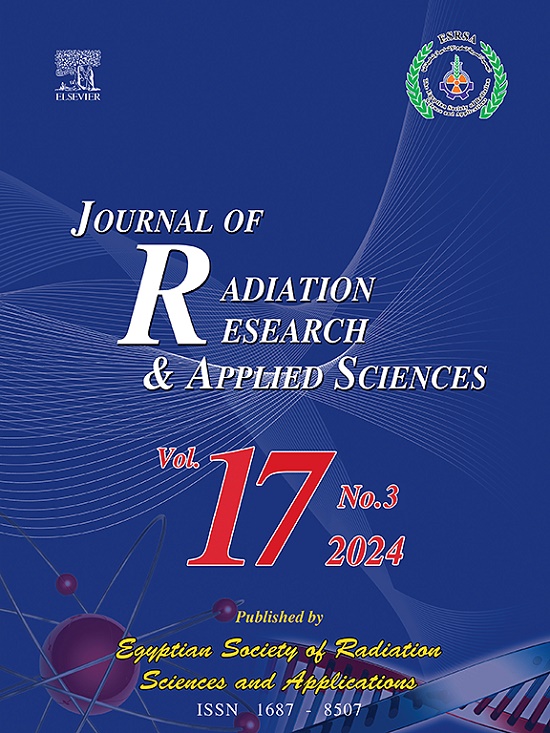麦克斯韦纳米材料辐射熵流的热传输分析:有限差分法
IF 1.7
4区 综合性期刊
Q2 MULTIDISCIPLINARY SCIENCES
Journal of Radiation Research and Applied Sciences
Pub Date : 2024-09-23
DOI:10.1016/j.jrras.2024.101121
引用次数: 0
摘要
最近,科学家们对在不可逆过程中尽量减少大量能量损失的方法表现出了浓厚的兴趣。熵的产生与热力学系统中的能量损失直接相关。因此,为了提高系统效率,必须进行熵优化。它在热科学和工程学中发挥着重要作用。鉴于这些重要的应用,我们在此仔细研究了麦克斯韦纳米液体磁化流动熵产生的数值分析。在生物对流存在的情况下,运动微生物也在考虑之列。热源、磁流体力学和辐射特性下的热传递。采用 Buongiorno 模型,通过随机运动和热泳因素增强传统液体的热传输。通过合适的变量建立了非线性偏微分方程系统(PDE)。通过有限差分法(FDM)对无量纲系统(PDEs)进行数值模拟。对速度、熵率、纳米粒子浓度、温度和微生物场等影响变量(发热、佩克莱特数、磁场、辐射、生物对流路易斯数、热泳、普朗特数和布朗运动变量)的物理结果。注意到通过磁场的液体运动衰减。辐射对熵率和温度也有类似的影响。本文章由计算机程序翻译,如有差异,请以英文原文为准。
Thermal transport analysis for radiative entropy generated flow of Maxwell nanomaterial: Finite difference approach
Recently scientists have shown their keen interest for methods which minimize the loss of significant energy during irreversible process. Entropy generation is directly associated with degraded energy in a thermodynamic system. Thus, for improvement in system efficiency entropy optimization is obligatory. It plays significant role in thermal science and engineering. In view of such important applications here we scrutinize the numerical analysis of entropy generated magnetized flow of Maxwell nanoliquid. Motile microorganisms within presence of bioconvection is under consideration. Heat transmission under the characteristics of heat source, magnetohydrodynamics and radiation. Buongiorno model is employed for the enhancement of thermal transport of conventional liquid through random movement and thermophoresis factors. Nonlinear partial differential systems (PDEs) are developed through suitable variables. Numerical simulations of dimensionless systems (PDEs) are obtained through finite difference method (FDM). Physical results of influential variables like (heat generation, Peclet number, magnetic field, radiation, bioconvective Lewis number, thermophoresis, Prandtl number and Brownian motion variables) for velocity, entropy rate, nanoparticles concentration, temperature and microorganism field. Decay in liquid motion through magnetic field noticed. Similar characteristics for rate of entropy and temperature through radiation is witnessed.
求助全文
通过发布文献求助,成功后即可免费获取论文全文。
去求助
来源期刊

Journal of Radiation Research and Applied Sciences
MULTIDISCIPLINARY SCIENCES-
自引率
5.90%
发文量
130
审稿时长
16 weeks
期刊介绍:
Journal of Radiation Research and Applied Sciences provides a high quality medium for the publication of substantial, original and scientific and technological papers on the development and applications of nuclear, radiation and isotopes in biology, medicine, drugs, biochemistry, microbiology, agriculture, entomology, food technology, chemistry, physics, solid states, engineering, environmental and applied sciences.
 求助内容:
求助内容: 应助结果提醒方式:
应助结果提醒方式:


